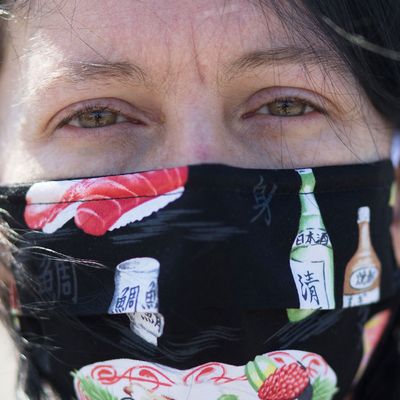
Now that many of us are encouraged (if not explicitly required) to wear masks in public, it can be hard to know how to act toward other people. We turn corners cautiously, trying to avoid passing within six feet of each other; we give disapproving glances to those who don’t even try to make space on the sidewalk. Most of the time, we can continue ignoring the strangers we pass, but sometimes — especially after weeks of isolation — a situation calls for a friendly, nonverbal greeting. But how does one smile at passersby with a mask on?
Though Tyra Banks taught us to smize, I personally have gotten the sense that people I’ve smiled at from behind my mask haven’t really understood that I’m smiling at them. My eyes may crinkle, but without my mouth or even my nose as supplementary clues, even I can’t confidently say I’m smiling when I practice, mask on, in the mirror.
This question calls to mind the body-language experts tabloids call up to dissect a picture of Meghan Markle — though it’s tempting to think of our bodies as codes, cues we’ve come to associate with certain behaviors (or feelings) aren’t as reliable as we might think. One person crossing their arms might be anxious and withholding, while another might just have tired arms. Smiling at a stranger is generally pretty straightforward, but without the key gesture, it would be hard for anyone to interpret meaning through eye contact alone.
I wondered if smizing behind a mask might constitute a microexpression, a term coined in the 1960s but popularized more recently by Paul Ekman, a psychologist who studies human emotions and the way we show them. But microexpressions are, by Ekman’s definition, involuntary: movements we make in fractions of a second, without meaning to, and often without our knowledge. Ekman’s research is mainly interested in microexpressions that reveal deception; you can “train” to become a lie detector through a class on his website for just $119–299. (Ekman has also received his fair share of criticism from psychologists and anthropologists who say his methods are flawed and his conclusions overly universalized.)
It’s obvious why we’d want a visual clue to determine if we’re being lied to;
there may be less urgency in research on what someone’s eyes might do when they’re frantically trying to convey friendliness to a neighbor. If we adopt mask-wearing for long enough, though, that might change, as might the cues we use to communicate.





